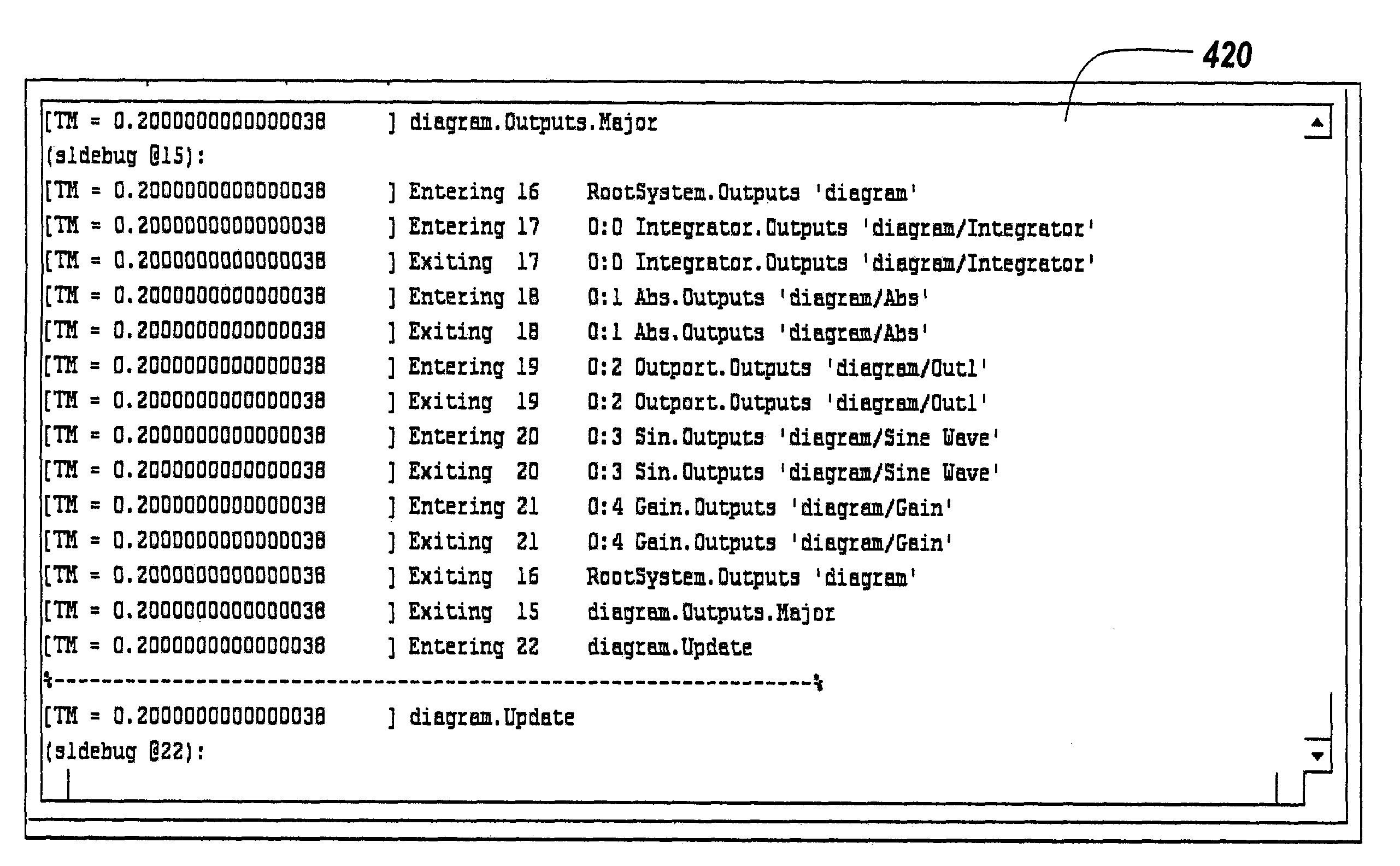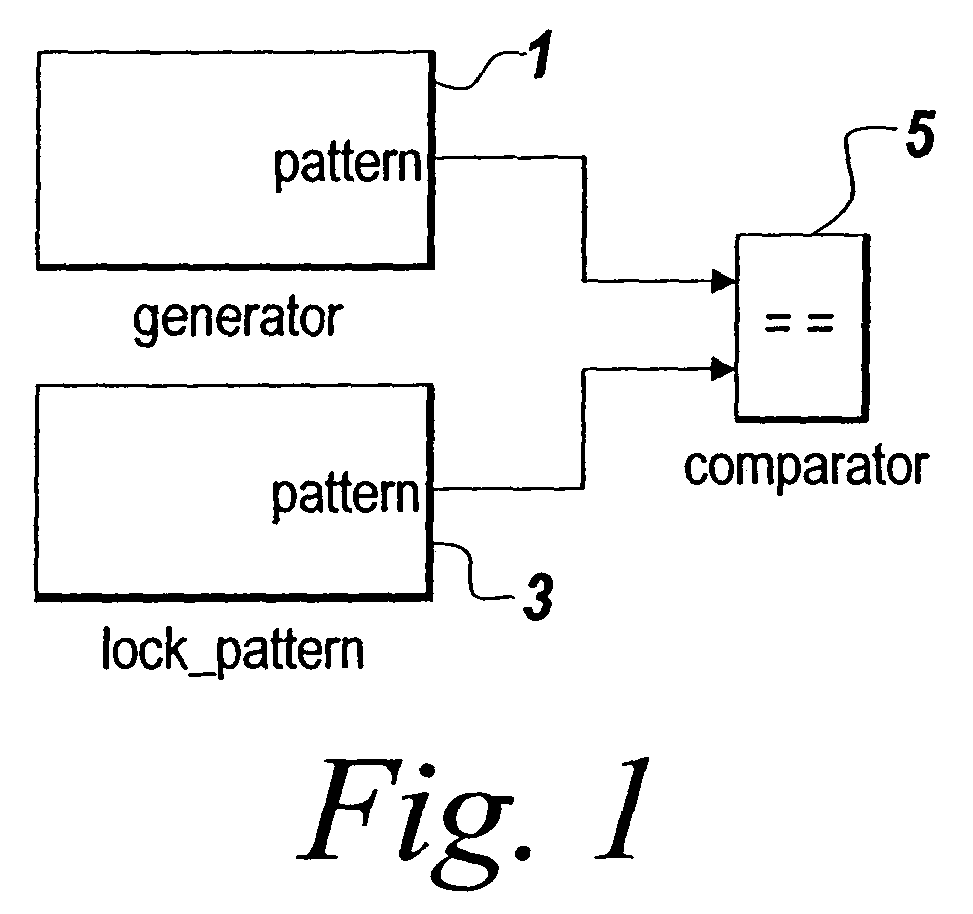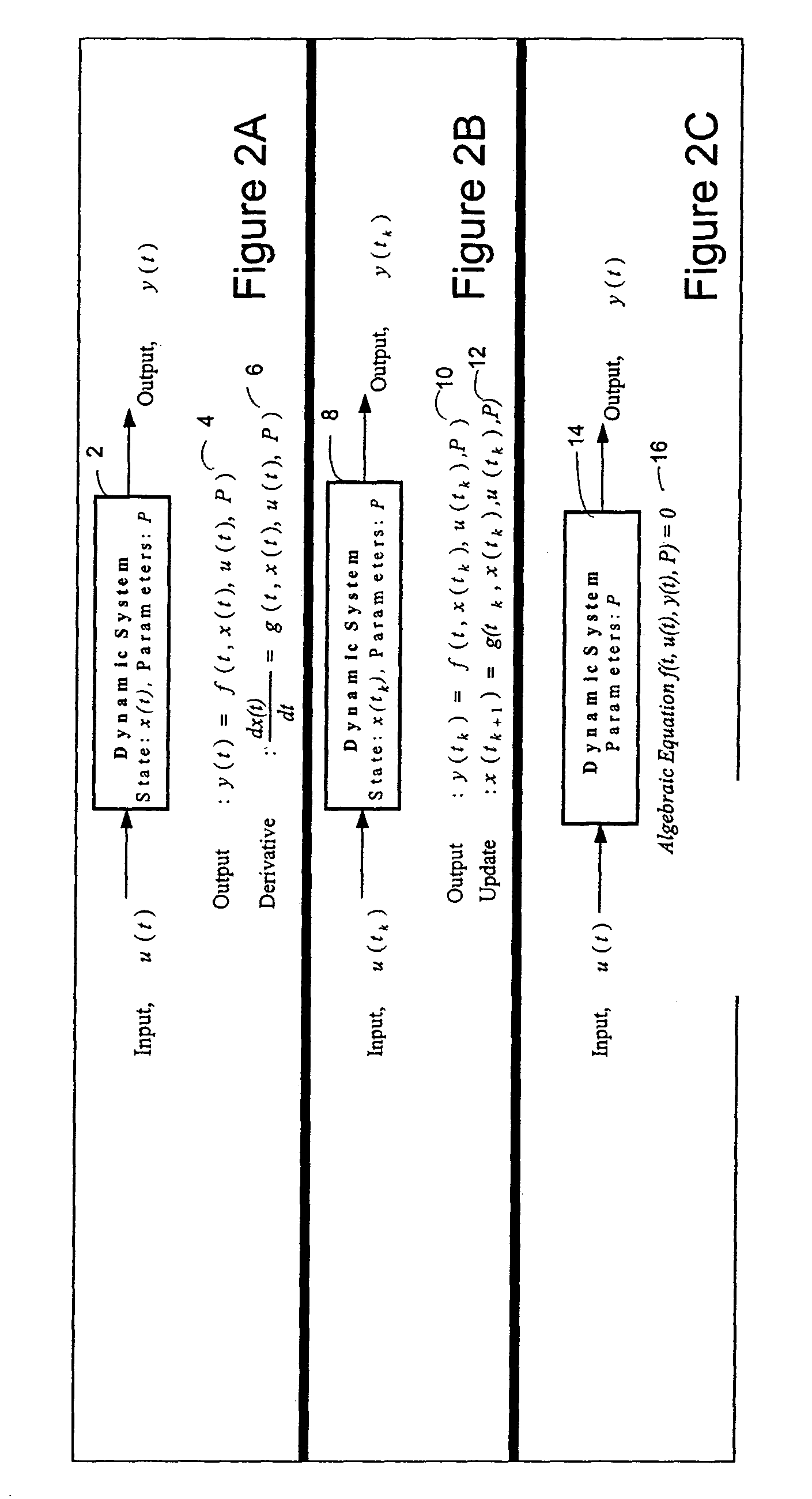Method for using a graphical debugging tool
- Summary
- Abstract
- Description
- Claims
- Application Information
AI Technical Summary
Benefits of technology
Problems solved by technology
Method used
Image
Examples
Embodiment Construction
[0056]The illustrative embodiment of the present invention allows a user to view debugging information in the same window as the graphical view of the model being simulated. Debugging data is associated with relevant parts of the model displayed in the graphical view. A separate execution list view shows the methods called during the simulation of the block diagram in the current time step up until the current point in simulation. User-set breakpoints and conditional breakpoints may be set in both the model view and the execution list view. The debugging tool may be implemented by using it in conjunction with a graphical design environment such as a block diagram environment, for example, Simulink™ from The MathWorks, Inc. of Natick, Mass.
[0057]For ease of explanation, references and examples herein discussing the modeling and execution environment are made to block diagrams being processed in a MATLAB™ and Simulink™-based environment. It should be understood however, that the prese...
PUM
 Login to View More
Login to View More Abstract
Description
Claims
Application Information
 Login to View More
Login to View More - R&D
- Intellectual Property
- Life Sciences
- Materials
- Tech Scout
- Unparalleled Data Quality
- Higher Quality Content
- 60% Fewer Hallucinations
Browse by: Latest US Patents, China's latest patents, Technical Efficacy Thesaurus, Application Domain, Technology Topic, Popular Technical Reports.
© 2025 PatSnap. All rights reserved.Legal|Privacy policy|Modern Slavery Act Transparency Statement|Sitemap|About US| Contact US: help@patsnap.com



